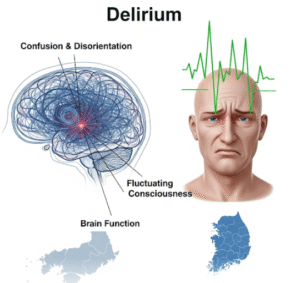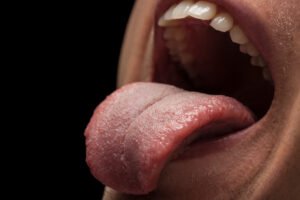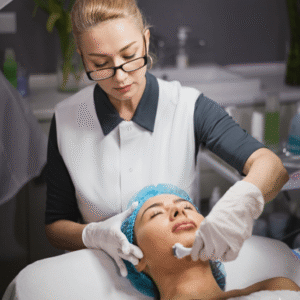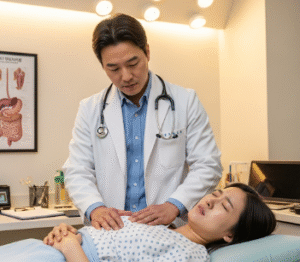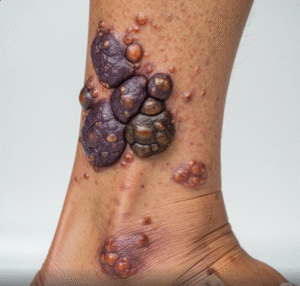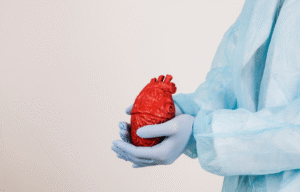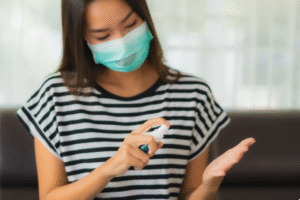Overview
Turf toe is a common sports-related injury involving a sprain of the ligaments around the big toe joint, specifically the metatarsophalangeal (MTP) joint. It usually occurs due to hyperextension of the toe, commonly during running, jumping, or pushing off forcefully on hard surfaces like artificial turf—hence the name. While often associated with athletes, anyone engaging in activities involving sudden toe movement can be affected. In South Korea, sports medicine clinics and orthopedic centers provide comprehensive diagnosis, imaging, and rehabilitation programs for turf toe, helping patients return to daily activities or athletic performance safely.
What is Turf Toe?
Turf toe is a ligament injury at the base of the big toe, primarily affecting the joint capsule and surrounding ligaments. It occurs when the big toe is forcibly bent upward (hyperextended), stretching or tearing the soft tissue structures that stabilize the joint. The injury is classified based on severity:
- Grade 1: Mild stretching of the ligaments, minimal swelling and pain
- Grade 2: Partial tearing with moderate pain, swelling, and limited movement
- Grade 3: Complete ligament rupture, severe pain, significant swelling, and inability to move the toe
The condition can result in chronic pain, reduced toe mobility, and instability if not properly managed. South Korean orthopedic specialists emphasize early detection and structured rehabilitation to minimize long-term consequences.
Symptoms
Symptoms of turf toe vary depending on the severity of the injury:
- Pain at the base of the big toe, worsened by movement or weight-bearing
- Swelling and tenderness around the metatarsophalangeal joint
- Bruising in moderate to severe cases
- Limited range of motion of the big toe
- Instability or a feeling of weakness when pushing off the foot
- Difficulty walking, running, or performing athletic movements
Acute turf toe is often noticeable immediately after injury, while milder cases may present gradually, particularly in athletes training on hard surfaces.
Causes
Turf toe is caused by traumatic hyperextension of the big toe. Common mechanisms include:
- Pushing off forcefully during sprinting or jumping
- Sudden stops or changes in direction in sports like soccer, football, or basketball
- Running or playing on artificial turf, which provides less natural give than grass
- Wearing stiff-soled shoes that restrict toe movement and increase stress on ligaments
- Previous toe injuries that weaken joint stability
Understanding these causes allows sports medicine specialists in Korea to implement preventive strategies for athletes and active individuals.
Risk Factors
Certain factors increase susceptibility to turf toe:
- Participation in high-impact sports involving sprinting, jumping, or pivoting
- Playing on artificial turf surfaces or hard floors
- Wearing shoes with limited flexibility or inadequate support
- Previous big toe or foot injuries that compromise joint stability
- Activities requiring sudden acceleration or forceful toe extension
Sports medicine clinics in South Korea often provide education on footwear, training techniques, and protective gear to reduce risk.
Complications
Untreated or severe turf toe can lead to long-term complications:
- Chronic pain and inflammation in the big toe joint
- Reduced range of motion, affecting walking, running, and athletic performance
- Joint instability leading to repeated injuries
- Development of arthritis in the metatarsophalangeal joint over time
- Difficulty performing daily activities or sports-related movements
- Formation of scar tissue or thickened ligaments causing discomfort
Early intervention and structured rehabilitation in South Korea help prevent these complications and restore normal function.
Prevention
Preventing turf toe focuses on strengthening the joint, improving flexibility, and minimizing excessive stress:
- Footwear: Use shoes with flexible yet supportive soles that allow natural toe movement
- Taping or bracing: Protect the big toe during high-impact activities or sports
- Strengthening exercises: Target foot and toe muscles to improve stability and joint support
- Proper training techniques: Avoid sudden hyperextension of the toe and maintain proper body mechanics
- Surface awareness: Minimize activity on excessively hard or uneven surfaces when possible
Korean sports medicine clinics often combine education, preventive taping, and conditioning programs to reduce the risk of turf toe in athletes.
Treatment Options in Korea
Treatment for turf toe in South Korea is guided by the severity of the injury and the patient’s activity level:
Diagnosis:
- Clinical examination to assess pain, swelling, and joint stability
- Imaging studies, including X-rays to rule out fractures, and MRI to evaluate ligament damage
- Range of motion testing to determine functional impairment
Medical Treatments:
- Rest and immobilization: Reducing weight-bearing activity and using stiff-soled shoes or boots for mild cases
- Ice therapy: To reduce swelling and inflammation
- Pain management: NSAIDs for pain relief and inflammation control
- Taping or orthotics: Support for the big toe during recovery
- Surgery: Reserved for severe Grade 3 injuries with complete ligament rupture or persistent instability
Rehabilitation:
- Physical therapy exercises to restore range of motion, strength, and joint stability
- Gradual return-to-sport protocols for athletes
- Functional training to prevent recurrence and improve overall foot mechanics
South Korean orthopedic and sports medicine centers provide personalized recovery plans, combining medical treatment, physical therapy, and preventive guidance to ensure optimal outcomes for turf toe patients.




